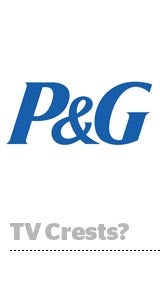 The world’s biggest advertiser wants more targeting.
The world’s biggest advertiser wants more targeting.
According to comments made Friday by Chief Financial Officer Jon Moeller, Procter & Gamble (P&G) has seized the audience segmentation opportunities presented by mobile, social and other digital media. Meanwhile the relatively weak targeting of the TV channel has stripped away some of its appeal, he said.
“[Digital media] does offer, based on what we’re seeing today, higher return potential,” Moeller told investors during the company’s fiscal Q2 earnings call today, according to a SeekingAlpha transcript. Areas of specific focus include media mix optimization and driving consumer interaction in mobile and social channels. “We see several more years of effectiveness improvement ahead, driven by new, more efficient digital and social mobile media and big opportunities to continue to improve the efficiency, precision and effectiveness of our communication.”
About 30% of P&G marketing spend goes to digital, social and mobile channels today.
In response to an analyst’s question for more detail on ad trends, Moeller said:
“If you think very simplistically about men and women, if you’re advertising on TV in particular, depending on what shows you’re on, that’s going to everybody, and we can much more carefully target content to recipient in a digital environment. So I expect that will continue to be an area of focus as we move forward, but I really do think this is a world of ‘and’ not of ‘or,’ and we’re really looking at comprehensive campaigns across media that consumers want to access.”
In other words, for all the ROI promise of the Internet, P&G – marketer of brands like Tide, Gillette, and Crest – will continue to set aside vast sums for offline media revenues. How vast? In its 2013 fiscal year, the CPG giant spent $9.7 billion on marketing. With 30% going to data-driven digital channels today, that leaves approximately $7 billion for broadcast, print and other traditional ad sellers in 2013-14.
Moeller chalked up digital’s vaunted efficiency to earned impressions – that is, free media. “That’s one of the reasons that we’re seeing higher returns in that space. And a huge number of those impressions were not paid for by us.”














